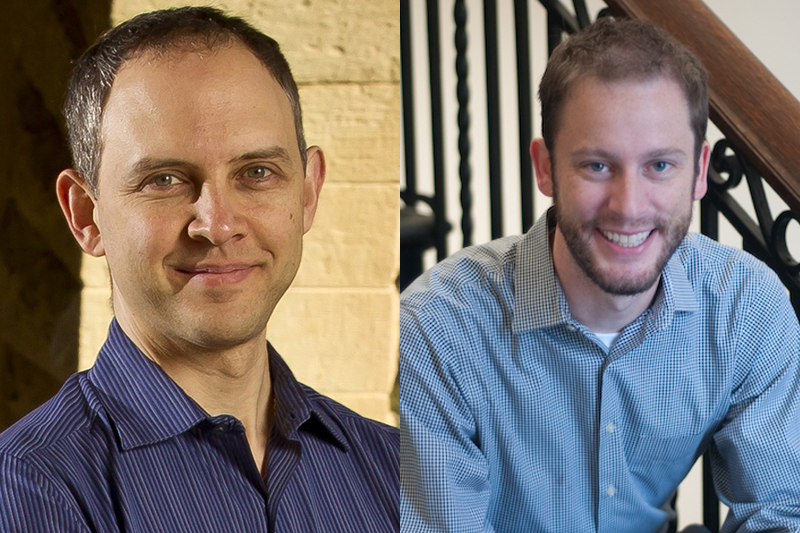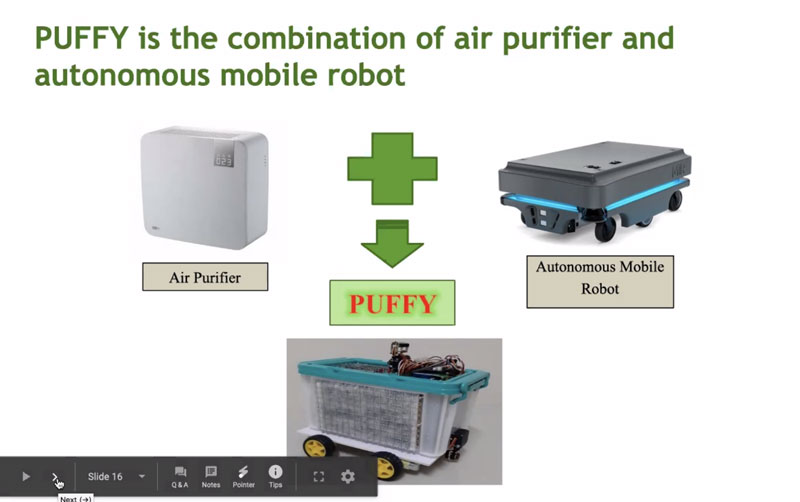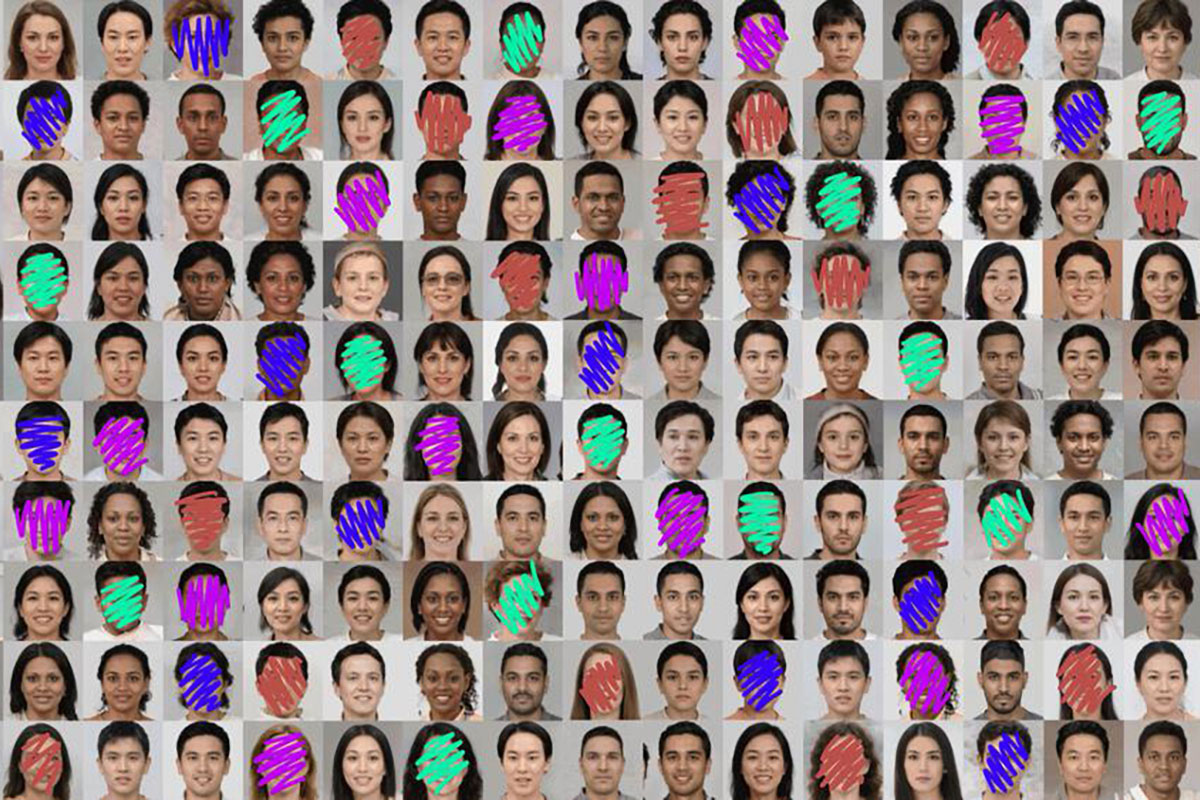Maker education — a combination of progressive, project-based pedagogies and environments rich with materials and technologies to help children create and invent — seems like a perfect antidote to the feelings of powerlessness induced by the COVID pandemic. Or as University of New Mexico computer scientist Leah Buechley put it at the recent ninth annual FabLearn Conference, “The most important component that constructionism brings to communities is the emphasis on student agency, engagement and interest.”
In welcoming 370 attendees from 31 countries, Teachers College faculty members Paulo Blikstein and Nathan Holbert, who co-chaired the conference along with Buechley, said that the conference’s theme, “Making as Resistance and Resilience,” was chosen in 2019 to address the “turmoil, chaos and change of that year.”
“Little did we know how much more turmoil and chaos 2020 would bring,” joked Blikstein, Associate Professor of Communications, Media & Learning Technologies Design and Director of TC’s Transformative Learning Technologies Lab (TLTL), who is the founder of FabLearn. “This year, it seems that our theme is even more important.”
“As science evolves, education needs to catch up — we need to develop ways for children to access new content, such as artificial intelligence, genomics, and climate science. Maker education is an important part of that.”
— FabLearn founder Paulo Blikstein of Teachers College
Case in point: The conference had to move online this year. But, in a display of the maker community’s resilience, a record 170 papers and projects were submitted, including several entries developed and crafted by K-12 students from many countries.
“There is a lot of momentum behind the movement,” said Holbert, Assistant Professor of Communications, Media & Learning Technologies Design and Director of TC’s Snow Day Learning Lab. “People are excited about making and by the possibilities opened up by constructionist technology. The areas of interest out there are just continuing to build.”

FAB DUO TC faculty members Paulo Blikstein (left) and Nathan Holbert co-chaired the FabLearn conference along with Leah Buechley of the University of New Mexico (Photo: TC Archives)
FabLearn is a program created by Blikstein to bring together educators, researchers, and children interested in exploring the role of making and building in learning. FabLearn has brought maker education to schools in 22 countries on four continents. It is rooted in the work of Seymour Papert and Paulo Freire. Papert, from the Massachusetts Institute of Technology, was a pioneer in the field of educational technologies who argued that children learn most effectively when they are invited to build personally meaningful artifacts and share them with peers. Freire, one of the founding names in Critical Pedagogy, argued for connecting education to students’ lives and culture, using schools as places to engender social change.
[Read a profile of Blikstein that appeared in TC Today magazine. Read about a recent grant Blikstein received to help improve STEM learning by children.]
In one project presented at the conference, teenagers working with the Innovation Lab at YR Media in Oakland are partnering with Stanford University researchers to design technology intended to foil the facial recognition software that has been linked to racial bias, stereotyping and discrimination.
Lissa Soep, Journalism Research Director and Senior Producer at YR and co-founder of the Innovation Lab, said the project has furthered the nonprofit’s mission of combining storytelling and technology to “move the dial” on conversations around equity and social justice.

FRESH TAKE An air purifying system designed by children who presented virtually at the FabLearn conference. (Photo: TC Archives)
Another presentation focused on a collaboration at the University of Chicago Laboratory School (founded by John Dewey), in which second- and seventh-grade students are teaming up to fabricate flower pots. The second-graders design and sketch the vividly-colored pots to present as Mother’s Day gifts, and then pass the drawings on to the seventh-graders, who use computer imaging to finalize the dimensions and scale. Together, the children in the two grades complete the production of the pots with a 3D printer.
“The design process really drove this project,” said Jeremy Schwartz, a teacher who oversaw the student work, adding that kids in both grades honed their skills in geometry, computer technology and interdisciplinary collaboration.
Presenters also discussed the ways in which making can be part of a larger effort to build opportunities for mentorship and community development. For example, Blackspace, a North Carolina-based Afrofuturism makerspace, offers digital opportunities for Black youth in Durham to create culturally relevant videos, 3D printing projects, spoken word poetry, music production, puppetry and coding.
“Blackspace is the first place I felt I’ve had a family outside of my home,” said a Durham teen in a video shared with conference-goers.
“The most important component that constructionism brings to communities is the emphasis on student agency, engagement and interest.”
— University of New Mexico computer scientist Leah Buechley
This year’s conference also included panels on “Hip Hop and Making” and “Equity and Constructionism,” as well as honors for the late learning scientist Mike Eisenberg and for Cynthia Solomon, a former Massachusetts Institute of Technology researcher credited for pioneering work in computer science, educational technology and artificial intelligence. Solomon received the FabLearn Lifetime Achievement Award.
Solomon punctuated her remarks with vintage slides and 35-millimeter film clips depicting the MIT computer labs in the 1960s and 1970s, where room-sized machines delivered results in 24 hours “if we were lucky.”
Yet it was the spirit of those brave beginnings that inspired Blikstein, then at Stanford, to bring together constructivist scholars and researchers for the first global FabLearn conference in 2011. The event has grown steadily, and Blikstein stresses the social justice component of this work, predicting that the FabLearn community will never run out of topics for discussion.
“We cannot be teaching kids 19th-century science in the 21st-century,” he says. “As science evolves, education needs to catch up — we need to develop ways for children to access new content, such as artificial intelligence, genomics, and climate science. Maker education is an important part of that. Today, the way you vote depends on your understanding of climate change, the way you use social media depends on your knowledge of AI. If we do not bring these ideas to public schools, we will have a deep divide between public school kids and those in affluent schools equipped with new types of curricula and learning spaces.”
